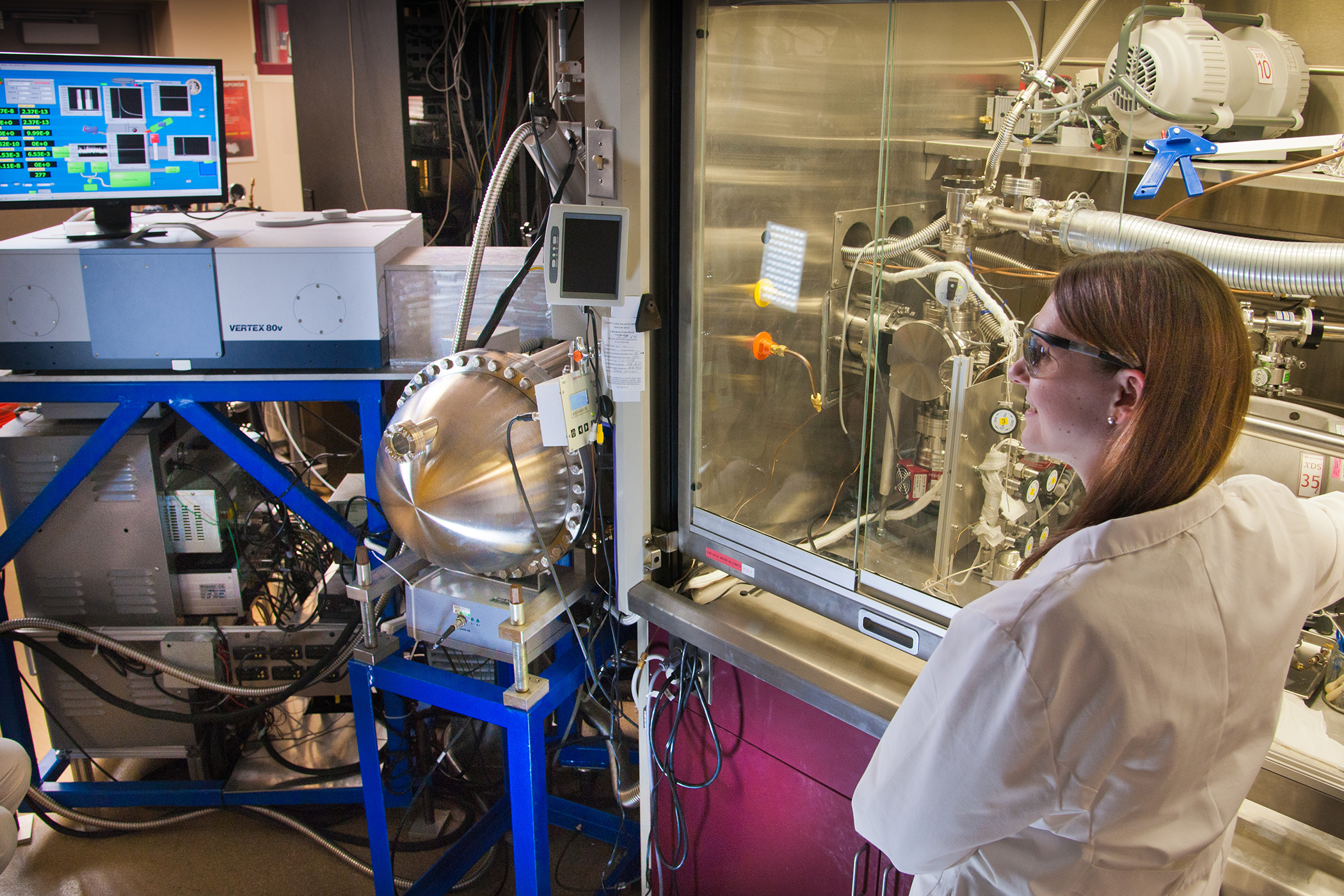Chemist builds device to measure chemical warfare agent effects on surfaces

For the last five years, the research group in the laboratory of John Morris, professor of analytical chemistry, has been doing something no group has done before – they have engineered, designed, and built an instrument, the size of which fills an entire laboratory, to study how chemical warfare agents react on surfaces.
Morris and his group are surface scientists who explore how molecules -- in this case deadly toxins like sarin and VX nerve agents -- react when they are in contact with surfaces. It’s important foundational work toward which the U.S. Army has already contributed $2 million in grant support.
“We are studying the decomposition of chemical warfare agents on surfaces,” Morris explained. “We’re interested in the reaction mechanisms: What happens to molecules when they come to rest on surfaces? How do they move as they transform from reactants into products? When chemical warfare agents impinge on a surface, they may decompose into products that could be toxic or benign, or they may simply evaporate back into the environment. Their reaction pathways depend on the physical and chemical properties of surfaces in ways that are poorly understood.”
To discover how these chemicals react, the first thing the Morris group needed was an instrument to investigate the interactions in a well-controlled environment, without the contaminants that are constantly present in ambient conditions. And so, the ultra-high vacuum surface analysis instrument was born. Although similar surface science instruments have been used for decades, this is the first specifically constructed for the study of chemical warfare agents.
“The difficulty really is that there are a number of measurements that must be conducted, but you can’t simply transport a sample of sarin from one piece of equipment to another as you risk contaminating the scientist and the laboratory,” he explained. “So, we built a device that incorporates multiple instruments into one inclusive system.”
The device Morris and his team built sprawls across a lab space with stainless steel appendages designed to create vacuums and harness mass spectroscopy, X-ray spectroscopy, microbalance techniques, visible spectroscopy, and infra-red spectroscopy – all in one place. The device was tested at Virginia Tech using non-toxic mimics of the actual agents before being disassembled and reconstructed in a new laboratory at the Edgewood Chemical and Biological Center at the U.S. Army’s Aberdeen Proving Grounds in Maryland.
“Sarin is one of the most highly toxic compounds ever synthesized, so obviously we can’t use live weapons-grade chemicals in our lab at [Virginia Tech],” Morris said. “By using molecules that are similar chemically, but not biochemically, we were able to produce a benchmark for the device. Now that our instrumentation is in operation at Aberdeen, we have been able to conduct experiments on actual chemical warfare agents. These first experiments are already providing new information about differences between the surface chemistry of the mimics and the actual agents.”
The first study with live agents has been published this year in the Journal of Physical Chemistry Letters and highlighted in a recent issue of Chemical and Engineering News. That study focused on the ways that chemical warfare agents stick to the surface of particulate silica, the primary component of common sand and soil.
“Our goal is to study the activity of the agents, at a molecular level, to learn about how different surfaces and materials might react. From there, others will apply this understanding to design new filtration systems, paints, and coatings that could have the ability to sequester or even destroy toxic chemicals.”
With the first experiments measuring the binding energy between silica and the agents complete, Morris will extend his group’s studies to other environmentally relevant systems. They are particularly interested in how other atmospheric gases, such as water and oxygen, may affect the surface chemistry of the agents.
Beyond environmentally important surface chemistry, “The Army has a list of militarily relevant materials such as protective clothing, paint, metals, and filters that may benefit from our science,” he said. “For example, we would like to eventually learn enough to help develop filters that actively decompose chemical warfare agents. The first step is to begin to understand the fundamental nature of agent-surface chemistry.” And now, he and his team have just the right instrumentation to make it happen.




